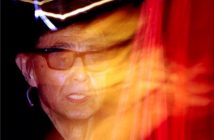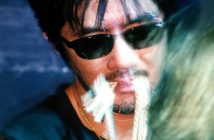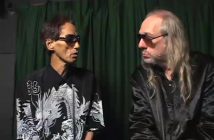“Shibari is 90% emotional. The other half is technical.”
This interview was first published on the TokyoKinky website.
Following our earlier article about Steve Osada’s online Japanese rope bondage learning platform, Kinbaku Academy, we sat down with the rope master for a conversation about his career and the state of shibari/kinbaku today.
Steve Osada (also often referred to using the Japanese name order, Osada Steve) inherited the Osada name in 2001 from grandmaster Eikichi Osada when he died. They had first met in 1998 for a photo shoot and Steve eventually started helping the grandmaster with his weekly shows as a pulley operator. The rest, as they say, is history.
We’re interested in the long-term process of inheriting the Osada name and continuing the work of Eikichi Osada.
I entered grandmaster Osada Eikichi’s orbit due to extremely fortuitous astrological alignment when sensei accepted me as his deshi (弟子, disciple).
In Japan, taking on an apprentice is considered a lifelong bond, and therefore doesn’t happen easily. I began serving under sensei until he passed away in 2001.
Subsequently, there were efforts from sensei’s inner circle to perpetuate the grandmaster’s legacy. And here I am, today, more than 25 years later, after inheriting the Osada name (and the harem that came with it) doing my very best to keep the legacy alive.
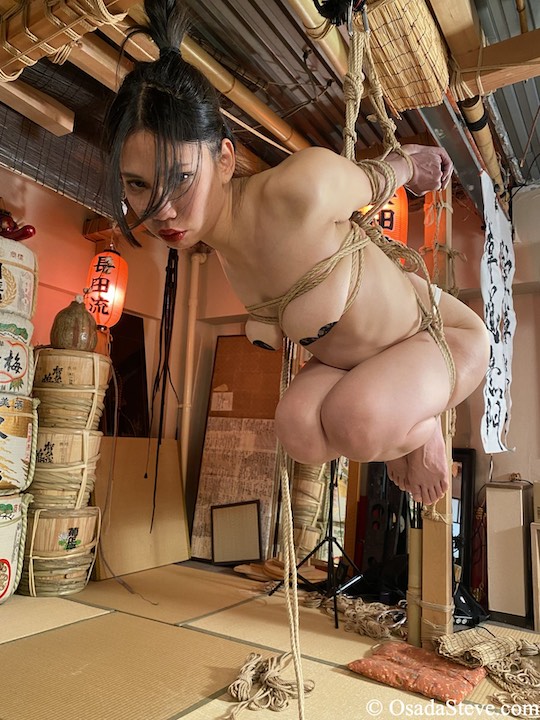
Your sensei said you should find your own style after perfecting his method. Since then, has Osada-ryu (Osada style/school) as one of the preeminent kinbaku styles evolved in any way?
Yes, it has. I have since studied with grandmasters Akechi Denki, Akechi Kanna, and Yukimura Haruki. And I am still studying the taijutsu-based sekibaku style of Yagami Ren sensei.
As a result, Osada-ryu has become the most comprehensive kinbaku style worldwide that encompasses the entire shibari range from semenawa to shuuchinawa. From torturous rope that induces suffering to caressing rope that inflicts erotic pleasure. Osada-ryu is an amalgamation of some of the most successful styles.
Obviously, the huge amount of instruction and teaching is one major contribution you have done, and perhaps the Nine Gates of Osada-ryu, but I was wondering specifically about new elements of rope styles?
You could say that I was instrumental in introducing Japanese rope art to the West. In addition to the technical aspects of tying I developed a philosophical umbrella that I call the Nine Gates. My students not only learn how to tie but also how to appreciate the deep feelings that connective tying can invoke.
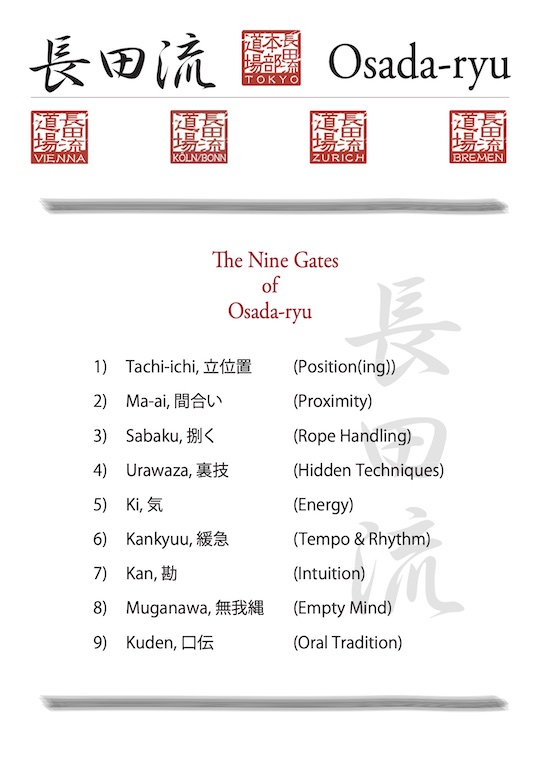
I am continuously pushing the envelope through practice, study, and research. As a result, Osada-ryu is constantly evolving. I’m not trying to find a new style. My goal is to take my tying to a deeper level. On a physical level you have three depths of touch: skin, tissue, bone. Depending on the strength of each touch you can affect different control. On a meta-physical level there are ways to reach the soul by touching the brain (the conscious), the heart (the subconscious), and the space between your ears (the libido). Locating the access points to these realms can be complicated but the method can be broken down into micro units. Thus, what at first glance sounds like some esoteric mumbo jumbo suddenly becomes possible.
While practicing the art I am also constantly discovering and developing new bondage “patterns” as well.
What challenges have you faced entering kinbaku professionally as a foreigner? Was there any distrust or lack of respect from colleagues, audiences, models, etc.?
The short answer is, I never encountered any kind of xenophobia.
At the time I entered the professional circuit it would take a talented person about six years of hard work before being able to make a living in this business. But, thanks to the fame of grandmaster Osada Eikichi, I became famously successful overnight. In short, inheriting the Osada name saved me six years of struggle.
In those days there were very few recognizable rope artists, mainly Akechi Denki and Randa Mai, and I had very good relations with them.
As for the audiences, it must have been an absolute refresher to watch this crazy gaijin taking his rope show on the road. Of course, having had a dynamite performance partner helped.
The quality of “models” in those days was different. At the turn of the century, you would run into women with very deep convictions that were seeking very hard “play.” Today, it has become “fashionable” or “cool” to be a “kinbaku model,” and you’ll get all sorts of fakes.
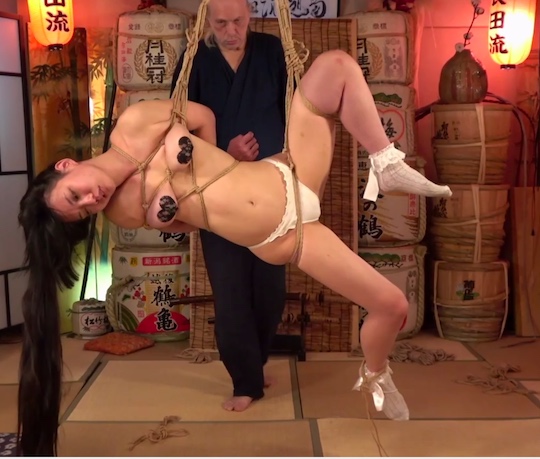
What are the challenges to make a distinctively Japanese esoteric art form accessible to non-Japanese audiences?
I think the desire to use rope is universal. Historically, bondage in the West focused on restraint while the emphasis of Japanese rope bondage is more on the actual “process” of tying and the emotional exchange that can be experienced by that “process.”
The “challenges” are mainly how to change the Western mindset from an engineering approach to a more free and artistic method. On average, my overseas students will stay at the Osada-ryu HQ dojo for three weeks of intensive study. Free accommodation provided. Over the past 25 years this total-immersion approach has had life-changing impacts on countless rope lovers.
The presence of licensed Osada-ryu instructors and accredited dojos seems to suggest that your school system has gained a global following.
Indeed. Osada-ryu is the first kinbaku school system of its kind and is being practiced worldwide.
Did the pandemic leave a mark on kinbaku in Japan?
Kinbaku venues have suffered economically through a loss of visitors and audiences. For example, the longest-running kinbaku show on earth (636 live performances at Studio SIX aka Osada-ryu HQ) had to take a two-year hiatus. This series is now slowly gaining momentum again.
My main activity, however, is teaching the art of kinbaku. With the borders closed, the income from overseas students dried up completely.
That’s when I started the kinbaku tutorial website Kinbaku Academy, featuring top professionals sharing their craft. I also began offering online workshops. Both endeavors are doing extremely well. For the Osada-ryu courses at the Kinbaku Academy you can now even get your skill levels certified.
Where do you see the future of kinbaku in Japan and/or internationally?
I believe that through cultural appropriation the Japanese tying arts will become increasingly diversified and unrecognizable. This is not to say that some “pure” strains will survive that follow the path of tradition, loyalty, and respect.
It is the typical pyramid where the original styles stay at the top, and where dilution of the art takes place at the bottom. Not necessarily out of disrespect, but mainly due to ignorance of the depth of what kinbaku has in store for you — a craft that is taking years to master.
What advice would you give a prospective kinbaku student — or even an aspiring rope master?
Most of my students study with me for personal growth, to enhance their private lives. My advice for people new to kinbaku would be to enjoy themselves and to empower their partners. With enough time and dedication, you will grow into a stronger and more confident person.
Wishing to become a rope master may be the wrong motivation for most. To attain fame and/or become a licensed Osada-ryu instructor will take years.
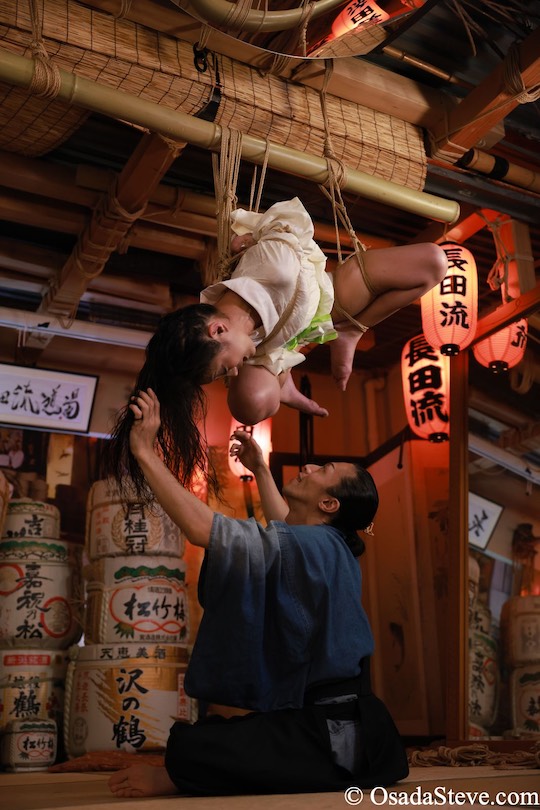
For more about Steve Osada’s career and work, check out the 2015 interview he did with Rope Topia that is available on Osada’s website Tokyo Bound.

